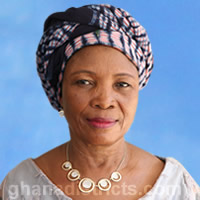Location and Size:
The Bole District lies between Latitude 8 10’ 5 and 09’ and Longitude 1 50E and 2 45 W. The Bole District is located at the extreme western part of the Northern Region of Ghana. The District is boarded to the North by Sawla/Tuna/Kalba District, to the west by the Republic of Ivory Coast, to the east by West Gonja District and to the south by Wenchi and Kintampo Districts of the Brong -Ahafo Region. The district stretches from Bodi in the north to Bamboi in the south.
Topology and Drainage
The district is drained by streams, rivers, dams and dugouts which serve the numerous needs of human beings and animals.
Climate and Vegetation
The vegetation of the district consists of savannah woodland, with trees such as sheanut, dawadawa, teak, kapok and mango - all economic trees. There are also tall grasses and shrubs, thorny species are also common. At a few places, flood plain, pond and clay, flat vegetations are found.
The natural vegetation in most parts of the district especially around the settlements has disappeared. What is seen today has resulted from the interference by man and animals through cultivation, grazing and exploitation for firewood. Beyond the major settlements the grasses are periodically burnt down especially during the dry season to clear the land of much of the vegetation. Grazing by animals has contributed to keeping the vegetation down.
The rains begin around May and end in October. The rainfall is seasonal and is characterized by a single maximum. The mean annual rainfall is about 1.100mm. The average rainfall is very small. June, July and August generally record the heaviest rainfall and also the greatest number of raining days. The rainfall is characterized by thunderstorms and are somewhat erratic in nature.
The vegetation of the district consists of savannah woodland, with trees such as sheanut, dawadawa, teak, kapok and mango - all economic trees. There are also tall grasses and shrubs, thorny species are also common. At a few places, flood plain, pond and clay, flat vegetations are found. The natural vegetation in most parts of the district especially around the settlements has disappeared. What is seen today has resulted from the interference by man and animals through cultivation, grazing and exploitation for firewood.
1st Quarter: Amount (mm) 2004: 0127.7; 2005: 0023.02 Wet Days: 2004: 05; 2005: 06. 2nd Quarter:Amount (mm) 2004: 0371.7; 2005: 0469.04. Wet Days:2004: 28; 2005: 30. 3rd Quarter: Amount (mm) 2004: 0559.8; 2005: 0534.00.Wet Days: 2004: 52; 2005: 36. 4th Quarter: Amount (mm) 2004: 0170.9; 2005: 0204.09.Wet Days: 2004: 12; 2005: 09. Total : Amount (mm) 2004: 1230.1; 2005: 1231.05.Wet Days: 2004: 97; 2005: 81.
Source: Ghana Meteorological Service Centre-Bole.
The variation between the rainfall days and the amount for the year 2004 and 2005 was not so much but the distribution for 2005 was not favourable for crop production.
TEMPERATURE
The district experiences extremes of temperature. The daily and annual range of temperature is wide. The coldest nights in the year are experienced in the months of December, January and February. During these months the air becomes dry and the atmosphere becomes hazy, making visibility impaired due to the fine dust in the air. The day temperatures at this period are between 28°C and 40°C but under cloudless skies the night can be very cold with temperatures under 28°C. This is the period of the harmattan. Sudden rise in temperature is experienced in the months of March, April and May when temperature exceed 30°C.
The nights are usually hot and people prefer to cook, eat and sleep outside. When the rains start the mean temperature begins to fall again. There is another period in the year when temperature rises again after the rains and there is a short hot season in November before the start of the harmathan.
WINDS
Two dominant winds influence the climate of the Bole District. The rain-bearing winds that bring rain to the district from May to October are the South West Winds from the Atlantic Ocean. From November to February, the harmattan period brings into the district the dry winds from the Sahara Desert. These winds carry a thick haze of dust. The wind-borne dust is often thick enough to obscure the sun and affect visibility. A lot of irritation and discomfort is caused during this time of the year.
Geology and Soil
Soils of the district are predominantly light textured surface horizons in which sandy loams are common. Many soils contain abundant coarse material either gravel or stone which adversely affect their physical properties particularly their water holding capacity. The soils are generally very fertile for agriculture
Date Created : 11/30/2017 1:45:45 AM





 facebook
facebook twitter
twitter Youtube
Youtube TOLL FREE 0800 430 430
TOLL FREE 0800 430 430 +233 593 831 280
+233 593 831 280 GPS: GE-231-4383
GPS: GE-231-4383 info@ghanadistricts.com
info@ghanadistricts.com Box GP1044, Accra, Ghana
Box GP1044, Accra, Ghana